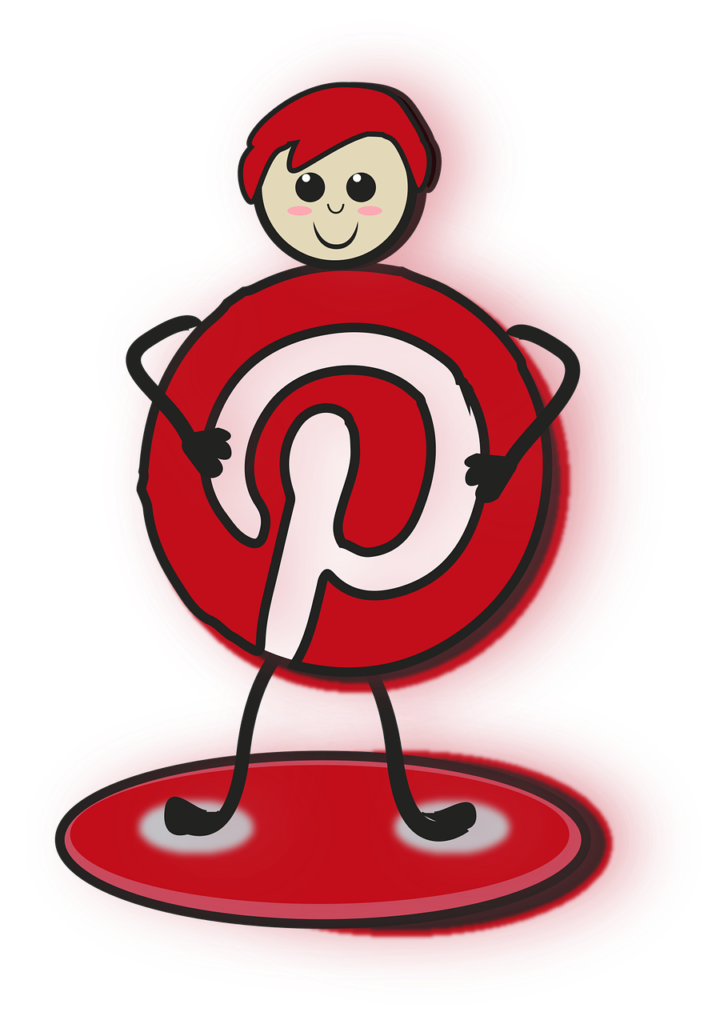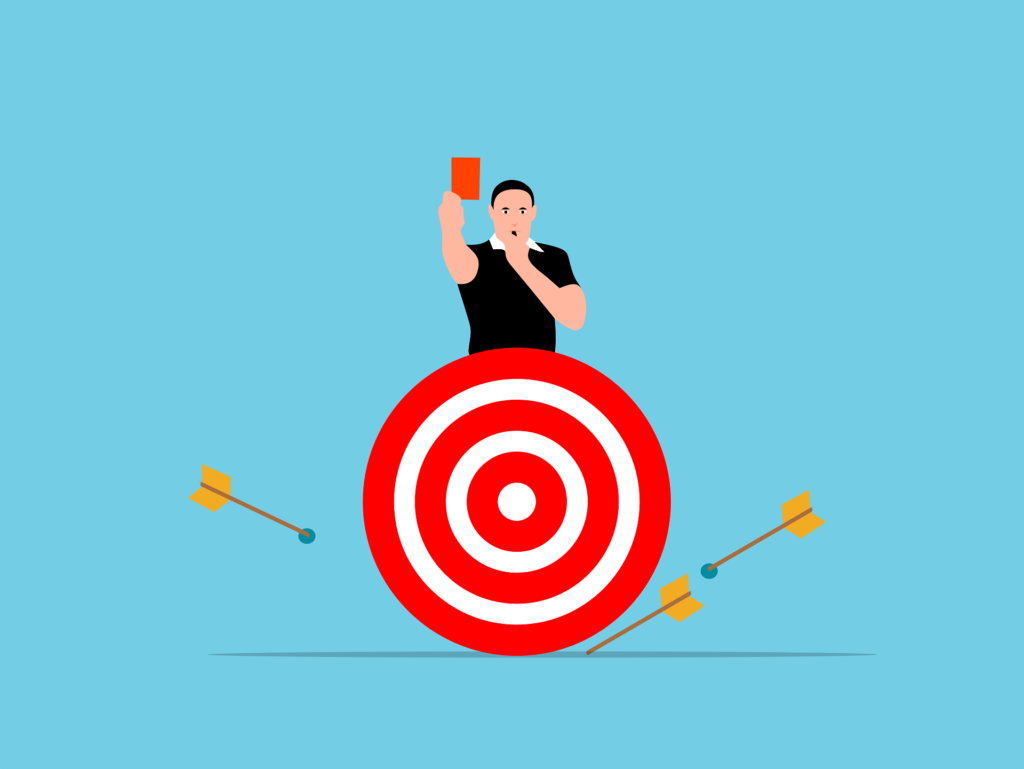Pinterest Affiliate Marketing – The Complete Roadmap to Profitable Results!
Introduction to Pinterest Affiliate Marketing
Welcome to the world of Pinterest affiliate marketing!
If you’re a newbie blogger, content creator, or an affiliate marketer, you’re in the right place.
Pinterest is more than just a social platform for sharing pretty pictures—it’s a powerful tool for driving traffic, generating leads, and boosting your affiliate income.
This comprehensive guide will walk you through everything you need to know, from setting up your account to advanced strategies.
- We’ll start by helping you create an eye-catching Pinterest profile that attracts followers and builds your brand.
- You’ll learn how to design pins that stand out and compel users to click, saving your pins to their boards.
- Next, we’ll dive into the importance of keyword-rich descriptions and how to optimize your pins for Pinterest’s search algorithm.
- You’ll discover how to join and contribute to group boards, expanding your reach even further.
- We’ll also cover the best practices for linking your pins to your affiliate products, ensuring you’re compliant with Pinterest’s guidelines.
- Plus, you’ll find out how to use Pinterest Analytics to track your performance and make data-driven decisions.
So, grab a cup of coffee, sit back, and get ready to transform your affiliate marketing game with Pinterest.
For a more thorough introduction into Pinterest Affiliate Marketing, check out my post on “Everything you need to know about Pinterest affiliate marketing.”
Happy pinning!
Setting Up Your Pinterest Account

Before diving into affiliate marketing on Pinterest, you’ll need a business account.
Here’s how to get started:
- Create a Business Account: Go to Pinterest and sign up for a business account.
This type of account provides access to analytics and other tools beneficial for marketers.
A business account allows you to track the performance of your pins and understand your audience better, which is essential for successful marketing.
- Optimize Your Profile: Use a professional profile picture, write a clear bio, and include relevant keywords.
Your profile picture should be a high-quality image that represents your brand effectively.
A clear and concise bio helps users understand what you offer and why they should follow you.
Incorporating relevant keywords will enhance your profile’s visibility in searches, making it easier for potential followers and customers to find you.
- Claim Your Website: This step is crucial as it allows you to access website analytics and enable rich pins, which provide more context about your pins.
Claiming your website ensures that your content is verified and linked back to your site, building credibility and trust with your audience.
Rich pins pull information directly from your website, offering users valuable details such as pricing, availability, and descriptions.
By optimizing your Pinterest profile and leveraging these tools, you can effectively drive traffic and sales through affiliate marketing.
Understanding Pinterest’s Algorithm

Pinterest’s algorithm determines what users see in their feeds.
Understanding this algorithm is essential for success:
- Engagement: Pins that receive more engagement (repins, likes, comments) are more likely to be shown to others. The more people interact with your pins, the more visibility they gain, which can significantly increase your reach.
- Relevance: Use keywords in your pin descriptions, board titles, and profiles to ensure your content reaches the right audience. By incorporating popular and relevant keywords, you can make your pins more discoverable to users who are interested in similar topics. This helps in connecting with your target audience effectively.
- Freshness: Regularly pin new content, as Pinterest prioritizes fresh content over older, stale pins. Consistently updating your boards with new pins keeps your profile active and engaging. Fresh content is more likely to attract attention and maintain the interest of your followers.
Taking the time to understand and leverage Pinterest’s algorithm can dramatically improve your visibility and success on the platform. Take advantage of these factors to optimize your pins and ensure they reach as many users as possible. Engaging content, relevant keywords, and a steady stream of new pins are key to thriving on Pinterest.
Choosing the Right Affiliate Programs

Not all affiliate programs are created equal.
Here are key factors to consider:
- Relevance: Choose programs that align with your niche and audience interests. This is crucial because promoting products or services that resonate with your audience will lead to higher engagement and conversion rates. Additionally, relevance helps build trust with your audience, making them more likely to follow your recommendations.
- Commission Rate: Higher commission rates can significantly boost your earnings. It’s important to compare different programs and see which ones offer the best return for your efforts. While higher rates are attractive, also consider the value and quality of the products being promoted—higher commissions on low-quality products won’t benefit you in the long run.
- Approval Process: Some programs have strict approval processes, so ensure you meet their criteria before applying. This might include having a certain amount of traffic on your website or social media platforms, or demonstrating expertise in your niche. Being prepared with the necessary information and qualifications can improve your chances of getting approved.
By carefully evaluating these factors, you can select affiliate programs that not only complement your content but also maximize your potential earnings. Taking the time to choose the right programs will pay off in the long run, creating a more effective and profitable affiliate marketing strategy.
Creating Engaging Pins

Eye-catching pins are crucial for attracting clicks.
Follow these tips to create engaging pins:
- High-Quality Images: Use visually appealing, high-resolution images.
High-quality images are the foundation of a compelling pin. They capture attention and entice users to click and learn more. Make sure your images are sharp, vibrant, and relevant to your content.
- Text Overlays: Add text overlays to highlight the main message or product.
Adding text overlays can effectively communicate the key message of your pin at a glance. Use clear, concise text that stands out against the background image. This helps users quickly understand what your pin is about, increasing the likelihood of engagement.
- Vertical Format: Pins with a 2:3 aspect ratio perform best on Pinterest.
The vertical 2:3 aspect ratio is optimal for Pinterest because it takes up more space in users’ feeds, making your pins more noticeable. This format ensures that your content is displayed prominently, improving visibility and click-through rates.
By focusing on these three elements—high-quality images, effective text overlays, and the vertical format—you can create pins that not only capture attention but also drive engagement. With the right approach, your pins can become powerful tools in your digital marketing strategy, attracting more clicks and ultimately leading to greater success on Pinterest.
Optimizing Pins for SEO

Optimizing your pins for SEO helps them appear in search results.
Here’s how:
- Keyword-Rich Descriptions: Craft detailed pin descriptions using targeted keywords like “affiliate marketing through Pinterest.” This helps the algorithm understand what your pin is about and match it with relevant searches. Make sure your keywords are naturally integrated into the description for a seamless reading experience.
- Hashtags: Use relevant hashtags to increase visibility. Hashtags act as additional keywords that can help your pin appear in more searches. Choose hashtags that are specific to your niche and audience. Avoid overly broad or generic hashtags that may bury your content among millions of others.
- Alt Text: Include keywords in your image alt text. Alt text is a valuable SEO tool that provides another opportunity to include your targeted keywords. It also improves accessibility for users who rely on screen readers. Ensure that your alt text accurately describes the image while incorporating keywords seamlessly.
By implementing these strategies, you can significantly increase the chances of your pins being discovered by a wider audience.
Remember, consistency is key. Regularly update and optimize your pins to keep up with changing trends and search algorithms.
With a little effort and attention to detail, you can make your pins stand out in the crowded Pinterest landscape.
Building Boards and Organizing Content
Organized boards make it easier for users to find your content.
Tips for building boards:
- Niche-Specific Boards: Create boards around specific topics within your niche.
This helps users quickly find the content they are interested in and makes your boards more appealing and relevant.
For example, if your niche is digital marketing, you might have separate boards for SEO tips, social media strategies, and email marketing tactics.
- Board Titles & Descriptions: Use descriptive, keyword-rich titles and descriptions.
Clear and precise titles make it easy for users to understand the content of your board at a glance.
Incorporating relevant keywords in your board titles and descriptions helps improve visibility in search results, both within the platform and on search engines.
Crafting engaging descriptions can also provide context and encourage users to explore your boards further.
- Regular Updates: Keep your boards active by regularly adding new pins.
An active board signals to users and algorithms that your content is fresh and up-to-date.
Consistently updating your boards ensures that your audience always has access to the latest and most relevant information.
This practice not only keeps your current followers engaged but also attracts new users to your boards.
By following these tips, you can create organized, engaging, and dynamic boards that will enhance the user experience and drive more traffic to your content.
Growing Your Pinterest Audience

Building a sizable audience on Pinterest involves consistent effort.
Engage with Others: Comment, like, and repin content from other users. Engaging with others builds relationships and increases your visibility. By actively participating in the community, you can attract more followers and drive traffic to your own pins.
Collaborate: Join group boards and collaborate with other pinners. Group boards are a powerful way to reach a larger audience and benefit from the collective following of all contributors. Collaborating with other pinners allows you to share your ideas and content with a broader audience, helping you grow your own following.
Promoted Pins: Use Pinterest ads to reach a wider audience. Promoted Pins are a great tool to get your content in front of more people. By investing in Pinterest ads, you can target specific demographics and interests, ensuring that your pins are seen by users who are most likely to engage with them.
Consistent engagement, collaboration, and strategic advertising are key to building a strong presence on Pinterest. By integrating these practices into your routine, you can steadily grow your audience and enhance your influence on the platform.
Tracking Performance and Analyzing Data

Monitoring your performance helps refine your strategy:
- Pinterest Analytics: Use Pinterest’s built-in analytics to track your pin performance. By understanding which pins are resonating with your audience, you can adjust your content strategy to better meet their interests. This tool provides valuable insights into the reach and engagement of your pins, helping you identify what works best.
- Google Analytics: Measure the traffic driven to your website from Pinterest. By linking Google Analytics with your Pinterest account, you can see how many visitors are coming to your site from your pins. This data helps you understand the overall effectiveness of your Pinterest marketing efforts. You can also track conversions and see which pins are driving the most valuable traffic.
- Key Metrics: Focus on metrics like impressions, clicks, and saves. Impressions show how many times your pins are seen, giving you an idea of your reach. Clicks indicate the number of users who found your pin compelling enough to visit your website. Saves reveal how many users found your content valuable enough to save for later.
By consistently monitoring these metrics, you can refine your strategy to maximize the effectiveness of your Pinterest marketing efforts. Analyzing these data points will help you understand your audience better and create more engaging and successful pins.
Advanced Strategies for Pinterest Affiliate Marketing
Once you’ve mastered the basics, consider these advanced strategies:
- Rich Pins: Enable rich pins to provide more information directly on the pin. Rich Pins automatically sync information from your website to your pins, making them more informative and engaging. This can include product details, recipes, articles, and more.
- A/B Testing: Experiment with different pin designs and descriptions to see what works best. A/B testing allows you to compare two versions of your pins to determine which one performs better. Try varying the images, headlines, and call-to-actions. Track the engagement metrics to find out what resonates most with your audience.
- Seasonal Content: Create pins for seasonal trends and holidays to capitalize on increased searches. People are often looking for specific seasonal content, whether it’s for Christmas, Halloween, summer vacations, or back-to-school tips. By aligning your content with these trends, you can increase visibility and engagement. Plan your content calendar in advance to ensure you’re prepared for these peaks.
Incorporating these advanced strategies into your Pinterest marketing plan can significantly enhance your reach and effectiveness. Each technique allows you to leverage different aspects of Pinterest’s platform, making your pins more relevant and engaging to your target audience. So, take the time to implement these strategies and watch your Pinterest presence grow.
Leveraging Pinterest Analytics
Pinterest analytics provides valuable insights:
- Audience Insights: Understand your audience demographics and interests.
With Pinterest analytics, you can delve deep into who your audience is. From age and gender to location and interests, these insights allow you to tailor your content to better meet their preferences. This understanding can help you create more targeted and effective marketing strategies, ensuring your pins resonate with the right people.
- Content Performance: Identify top-performing pins and replicate their success.
Knowing which pins are performing well is crucial for maintaining and improving your Pinterest presence. Pinterest analytics provides data on which pins are getting the most engagement, allowing you to understand what works and why. By identifying successful pins, you can replicate their strategies in future content, driving more traffic and engagement to your profile.
- Trend Analysis: Stay ahead of trends by monitoring what’s popular among your audience.
Keeping up with trends is essential in the fast-paced world of social media. Pinterest analytics helps you stay ahead by showing you what’s currently popular among your audience. By monitoring these trends, you can adjust your content strategy to align with audience interests, ensuring you remain relevant and engaging.
Pinterest analytics is an invaluable tool for anyone looking to optimize their Pinterest marketing. By providing detailed insights into audience demographics, content performance, and current trends, it allows you to make informed decisions that drive success.
Monetization Strategies Beyond Affiliate Links

While affiliate links are a primary income source, consider these additional strategies:
- Sponsored Content: Partner with brands to create sponsored pins. This can be a lucrative way to monetize your Pinterest presence. Brands are often willing to pay for high-quality content that aligns with their products or services. By creating engaging and visually appealing pins, you can attract sponsorship deals that boost your income.
- Product Sales: Sell your products directly on Pinterest. Utilize the platform’s shopping features to showcase your merchandise. Whether you have a line of handmade crafts or digital products, Pinterest can serve as an effective storefront. By optimizing your pins with compelling images and descriptions, you can convert Pinterest users into paying customers.
- Lead Generation: Use Pinterest to drive traffic to webinars or courses. Create pins that link to your landing pages, where users can sign up for your events. This strategy not only helps you build an email list but also positions you as an authority in your niche. Hosting webinars or online courses can further diversify your income streams, providing value to your audience while generating revenue.
By diversifying your strategies and leveraging Pinterest’s unique features, you can maximize your income potential and create a sustainable business model.
Integrating Pinterest with Other Marketing Channels

Maximize your reach by integrating Pinterest with other channels:
- Social Media Cross-Promotion: Share your pins on other social platforms. By promoting your Pinterest content on sites like Facebook, Twitter, and Instagram, you can drive traffic back to your boards and increase visibility. This not only helps in growing your Pinterest following but also allows you to reach audiences that might not be as active on Pinterest.
- Email Marketing: Include Pinterest links in your newsletters. Email marketing remains one of the most effective means of communication with your audience. By incorporating direct links to your Pinterest boards or specific pins, you can encourage your email subscribers to engage with your Pinterest content. Highlight relevant pins that match the theme of your newsletter to make the integration seamless and valuable.
- Blog Integration: Embed pins in your blog posts to encourage sharing. Blogs are great platforms for driving traffic and engagement. By embedding Pinterest pins directly into your blog posts, you not only provide visual interest but also make it easy for readers to save and share your content on Pinterest. This can lead to increased repins and exposure for your pins, as well as more traffic back to your blog.
Integrating Pinterest with these channels can significantly enhance your overall marketing strategy and help you reach a broader audience. Each platform offers unique opportunities to showcase your Pinterest content and drive engagement, making it a powerful addition to your marketing toolkit.
Common Mistakes to Avoid

Avoid these pitfalls to ensure your Pinterest marketing efforts are successful:
- Ignoring SEO: Don’t overlook the importance of using keywords.
Keywords are the backbone of visibility on Pinterest.
Make sure your boards, pins, and descriptions are rich with relevant keywords to improve discoverability.
Search optimization is crucial as it helps your content appear in user searches, driving more traffic to your profile.
- Inconsistent Pinning: Regular pinning is crucial for maintaining visibility.
Pinterest rewards consistency, so make a habit of pinning regularly.
Whether it’s daily or several times a week, maintaining a steady flow of fresh content keeps your audience engaged and your profile active.
Use scheduling tools to manage your pins and ensure you’re consistently sharing new content without fail.
- Low-Quality Pins: Invest time (and maybe even money!) in creating high-quality, engaging pins.
Pinterest is a visual platform, and the quality of your pins can significantly impact engagement.
High-quality images with clear, compelling text overlays and descriptions are essential.
Consider using design tools to enhance the appeal of your pins.
Engaging and visually attractive pins are more likely to be repinned, increasing your reach and influence on the platform.
By avoiding these common mistakes, you can enhance your Pinterest marketing strategy, ensuring better engagement and success over time.
Conclusion
Pinterest affiliate marketing offers immense potential for affiliate marketers, bloggers, and content creators. By understanding the platform, optimizing your content, and leveraging advanced strategies, you can drive significant traffic and boost your affiliate income.
The key to success on Pinterest is to thoroughly understand how the platform works and to tailor your approaches accordingly. This means staying on top of Pinterest trends, understanding your audience, and crafting visually appealing pins that capture attention.
Optimizing your content involves using the right keywords, creating high-quality images, and writing compelling descriptions that entice clicks. In addition, making use of Pinterest’s analytics tools can help you track your performance and refine your strategies over time.
Leverage advanced strategies by collaborating with other influencers, joining group boards, and utilizing Pinterest’s advertising options to reach a broader audience. It’s also important to be consistent in your posting and to engage with your followers to build a loyal community.
By diligently applying these tactics, you can see a marked increase in traffic to your affiliate offers, leading to higher conversions and more income.
Start implementing these tips today and watch your Pinterest efforts pay off. With dedication and a strategic approach, the potential for success in Pinterest affiliate marketing is vast.
Frequently Asked Questions (FAQs)
1. How can I start using Pinterest for affiliate marketing?
To start using Pinterest for affiliate marketing, first sign up for a Pinterest business account if you don’t already have one. Create visually appealing boards and pins tailored to your niche and audience. Include your affiliate links within pin descriptions, but ensure they are relevant and add value. Use Pinterest’s analytics to monitor your performance, and optimize your content based on engagement metrics.
2. What types of images work best on Pinterest?
High-quality, vertically-oriented images perform best on Pinterest. The ideal aspect ratio is 2:3, as taller images stand out more in feeds. Use bright, engaging visuals with clear and concise text overlays to capture attention. Tools like Canva can help you design professional-looking pins. Always ensure your images are relevant to the content they link to and are of high resolution.
3. How often should I pin for optimal results?
Consistency is key on Pinterest. Pinning at least once a day is recommended, but more frequent pinning can lead to better results. Aim for a mix of fresh content and repinned content to keep your boards active. Utilize scheduling tools like Tailwind to plan your pins in advance and maintain a steady posting schedule without overwhelming your audience.
4. How can I increase my Pinterest engagement?
To increase engagement on Pinterest, focus on creating high-quality, visually appealing pins that resonate with your audience. Use relevant keywords in your pin descriptions to improve discoverability. Engage with other users by repinning, commenting, and liking their content. Join group boards relevant to your niche to expand your reach. Regularly analyze your pin performance and adjust your strategies based on what works best.
5. Are there any specific guidelines for using affiliate links on Pinterest?
Yes, Pinterest has specific guidelines for using affiliate links. Always disclose your affiliate relationships to stay transparent with your audience. Avoid spammy or overly promotional behaviour; make sure your pins provide value. Ensure that your links go directly to relevant, high-quality content. Check Pinterest’s current policies, as they can change, to ensure you’re in compliance and to avoid potential issues with your account.
About Lax
Hi, my name is Lax, I’m a Growth Marketer and Digital Marketing Consultant.







